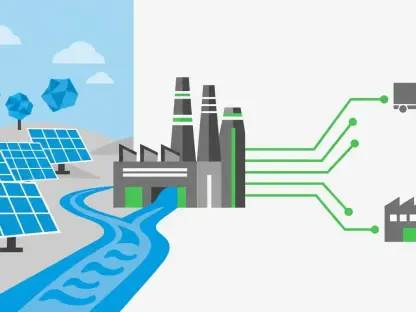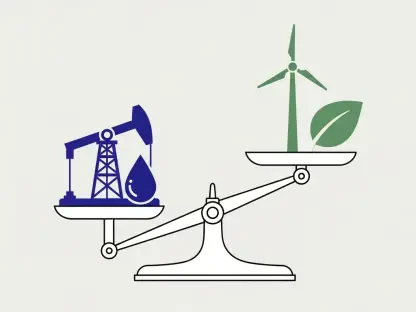Christopher Hailstone has carved out a niche in the realm of energy management, renewable energy, and electricity delivery. His insights on grid reliability and security have been invaluable in advancing our understanding of the complexities involved in these areas. Today, he joins us to discuss the discovery of the Huizhou 19-6 oil field in the South China Sea, a colossal breakthrough that’s set to shift global energy dynamics.
Can you provide an overview of the Huizhou 19-6 oil field discovery?
The Huizhou 19-6 oil field, discovered by the China National Offshore Oil Corporation (CNOOC), is a major offshore oil reservoir situated roughly 106 miles off the coast of Shenzhen. Initially tests revealed the field contains around 110 million tons of oil reserves, along with 413 barrels of crude oil and 68,000 cubic meters of natural gas. It’s a significant find due to its size and depth, marking China’s first large-scale integrated clastic oilfield found in deep to ultra-deep layers.
How significant is this oil field in the context of China’s previous oil discoveries?
Historically, China has made substantial strides in energy exploration, but the Huizhou 19-6 stands out due to its scale and the technological feats required to access it. This discovery not only elevates China’s status in global energy markets but also showcases their advancing capabilities in overcoming the challenges associated with deep-sea drilling.
What technological advancements facilitated the discovery of the Huizhou 19-6 oil field?
During China’s “13th Five-Year Plan,” there were major advancements in drilling technologies. These developments included cutting-edge tools capable of operating in high-pressure, high-temperature environments typical of deep-sea and ultra-deep layer exploration. These innovations have been crucial in accessing such depths and overcoming geological obstacles.
What are the unique geological features of the Huizhou 19-6 oil field, especially with respect to clastic rocks?
Clastic rocks in the Huizhou 19-6 field present a unique challenge due to their sedimentary nature and low permeability. These rocks are formed from fragments of other rocks and are characterized by complex sedimentary profiles, which complicate the extraction process. Understanding and navigating their intricacies has required significant geological expertise and advanced drilling technology.
What challenges does drilling in deep to ultra-deep layers present?
Drilling in deep to ultra-deep layers involves navigating high temperatures, immense pressures, and increasingly complex geological conditions. These factors demand specialized drilling equipment and techniques to safely and efficiently reach and extract the resources. The technical demands are substantial, requiring constant innovation and adaptation.
How have technological improvements helped overcome these challenges?
Innovations in drilling technology have addressed many of these challenges. For example, advanced drilling rigs and enhanced materials can withstand extreme conditions, allowing operatives to reach previously inaccessible depths. Additionally, automated and remotely operated systems have improved precision and safety in these high-risk environments.
What environmental regulations must be adhered to during deep-sea oil extraction?
Deep-sea oil extraction mandates strict adherence to environmental regulations designed to protect marine ecosystems. These include protocols for waste management, preventing oil spills, and minimizing habitat disruption. Companies are required to implement robust monitoring and emergency response plans to mitigate any adverse environmental impacts.
How does China plan to balance oil extraction with environmental protection?
Balancing energy extraction with environmental protection is a complex endeavor. China has been investing in cleaner technologies and developing comprehensive environmental impact assessments to sustainably manage their oil extraction processes. This involves rigorous planning to minimize ecological disturbances and implementing technology that reduces carbon footprint.
Can you elaborate on the environmental implications of such deep-sea drilling projects?
Deep-sea drilling projects pose significant environmental risks, including potential oil spills, disruption of marine habitats, and pollution. These activities can affect biodiversity and ocean health. Mitigating these impacts requires stringent regulatory practices and the adoption of eco-friendly technologies designed to safeguard marine environments.
What economic benefits does the Huizhou 19-6 oil field bring to China?
The Huizhou 19-6 oil field is a substantial boost to China’s energy security and economic growth. It provides a major domestic source of oil, reducing reliance on imports, and contributes to the national economy through job creation and energy revenues. This discovery will likely have a positive ripple effect across related industries.
How might this discovery impact global energy markets?
The sheer volume of reserves in the Huizhou 19-6 oil field could significantly affect global oil supply and prices. As China taps into these resources, it might shift the balance in global energy markets, potentially reducing volatility and altering trade dynamics. This discovery strengthens China’s position as a key player in the oil industry.
In what ways could this discovery influence China’s energy security policies?
With this discovery, China can bolster its energy security by decreasing dependency on foreign oil. This strategic win allows China to reframe its energy policies, focusing on self-sufficiency and long-term sustainability. It also provides leverage in geopolitical negotiations related to energy trade and security.
How does the Huizhou 19-6 discovery affect China’s position in the global energy landscape?
The discovery solidifies China’s role as a formidable force in the global energy sector. It enhances their ability to influence global energy policies and market developments. This could lead to increased collaboration or competition with other major oil-producing nations, reshaping energy strategies worldwide.
What are the potential geopolitical implications of this oil field discovery?
Geopolitically, the Huizhou 19-6 oil field strengthens China’s negotiating power and influence in international energy agreements. It could lead to increased tensions or collaborations depending on how China leverages these resources. The discovery may prompt shifts in alliance, trade policies, and energy strategies globally.
What are the future prospects for deep and ultra-deep oil exploration globally?
The future of deep and ultra-deep oil exploration looks promising but faces challenges. Technological innovation will continue to play a pivotal role in making these ventures feasible. As demand grows, countries will invest more in R&D to explore and utilize deep-sea oil reserves, pushing the boundaries of what’s currently possible.
How can industry stakeholders ensure sustainable practices in oil exploration?
Ensuring sustainable practices requires stringent regulatory compliance, investing in green technologies, and prioritizing environmental impact assessments. Industry stakeholders must foster a culture of responsibility and innovation, continuously seeking ways to minimize harmful effects while extracting maximum value from reserves.
What role will innovation and research play in the future of oil exploration?
Innovation and research are the cornerstones of future oil exploration. Advancing technologies for safe and efficient extraction, improving environmental protection measures, and developing alternative energy sources are crucial. Collaborative research efforts will drive progress in overcoming existing challenges and achieving sustainable extraction.
How do you see the balance between energy exploration and conservation evolving in the coming years?
As global awareness of environmental issues grows, the energy sector will increasingly prioritize sustainable practices. The balance between exploration and conservation will continue to evolve, with more robust policies and innovative technologies aimed at reducing environmental impact while meeting energy demands.
What lessons can be learned from the Huizhou 19-6 discovery that can be applied to future projects?
The Huizhou 19-6 discovery underscores the importance of technological innovation, strategic planning, and environmental awareness. Future projects can adopt the successful approaches used here, emphasizing rigorous research, sustainable practices, and adaptive strategies to navigate the complexities of modern oil exploration.
Do you have any advice for our readers?
Stay informed and engaged with developments in the energy sector. Understand the critical balance between energy needs and environmental stewardship, and advocate for sustainable practices. Keeping an eye on innovations and policies will help you anticipate changes and contribute to a more sustainable future.









